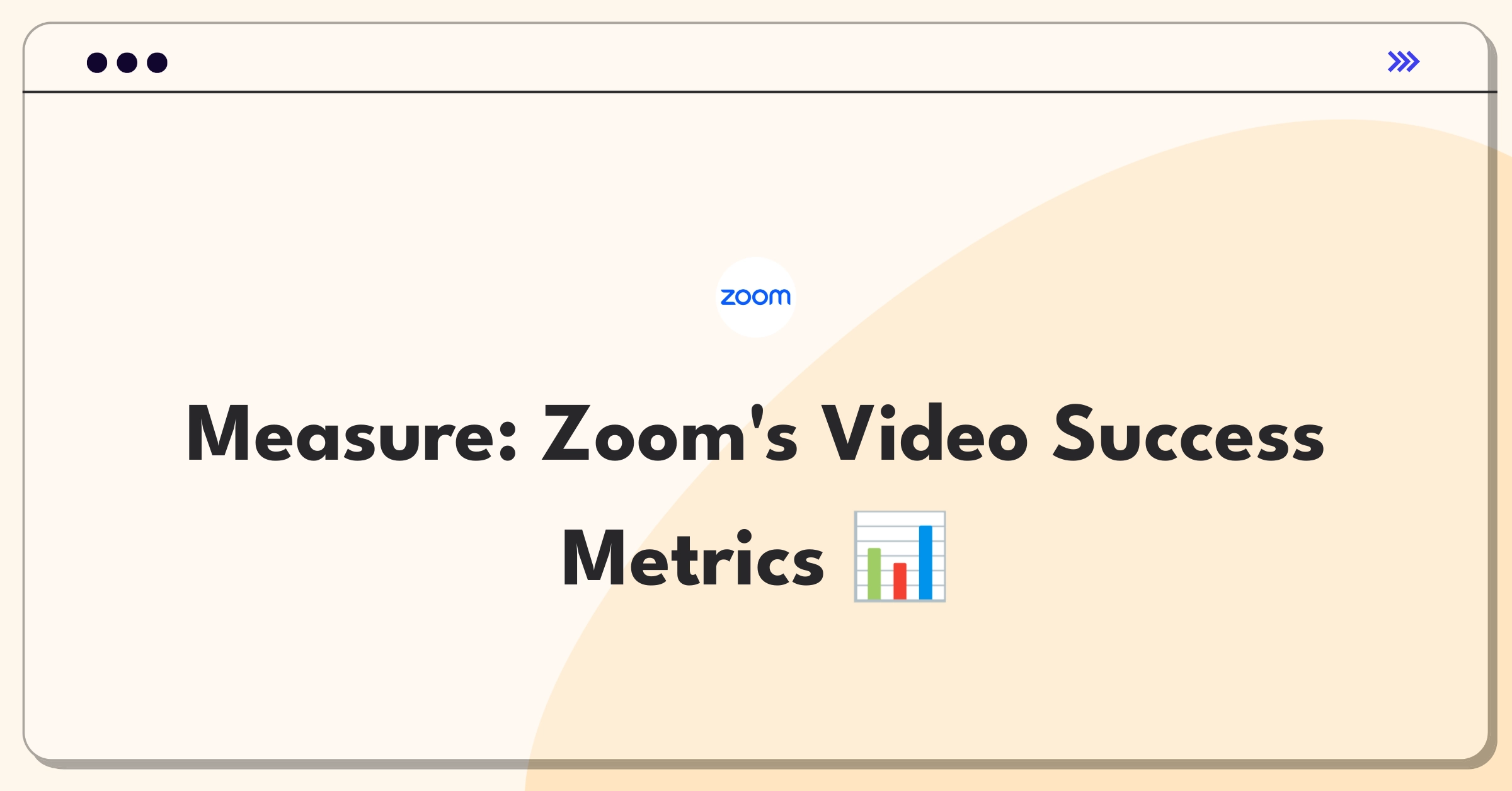Introduction
Measuring the success of Zoom's video conferencing feature requires a comprehensive approach that considers multiple stakeholders and various aspects of the product. To effectively evaluate this critical component of Zoom's offering, I'll follow a structured framework covering core metrics, supporting indicators, and risk factors while considering all key stakeholders.
Framework Overview
I'll follow a simple success metrics framework covering product context, success metrics hierarchy.
Step 1
Product Context
Zoom's video conferencing feature is a core component of their unified communications platform, enabling real-time video meetings for individuals and organizations. Key stakeholders include:
- End-users (both free and paid)
- IT administrators
- Zoom's business leadership
- Investors
The user flow typically involves:
- Joining or starting a meeting
- Engaging in video/audio communication
- Utilizing in-meeting features (screen sharing, chat, etc.)
- Ending the meeting
This feature is central to Zoom's strategy of providing frictionless, reliable video communication. Compared to competitors like Microsoft Teams or Google Meet, Zoom has positioned itself as a video-first platform with a reputation for ease of use and reliability.
In terms of product lifecycle, Zoom's video conferencing is in the maturity stage, with widespread adoption but facing increased competition and the need for continuous innovation.
Subscribe to access the full answer
Monthly Plan
The perfect plan for PMs who are in the final leg of their interview preparation
$99 /month
- Access to 8,000+ PM Questions
- 10 AI resume reviews credits
- Access to company guides
- Basic email support
- Access to community Q&A
Yearly Plan
The ultimate plan for aspiring PMs, SPMs and those preparing for big-tech
$99 $33 /month
- Everything in monthly plan
- Priority queue for AI resume review
- Monthly/Weekly newsletters
- Access to premium features
- Priority response to requested question


.png)